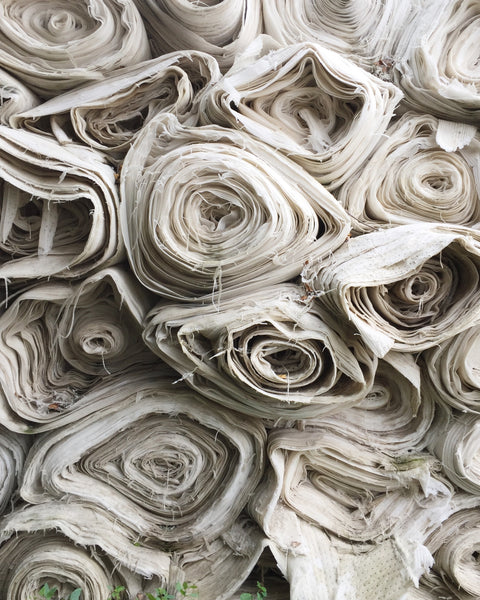When was the last time you read the label of a piece of clothing you were buying online or in the store? For most people, the answer is never - and here's why that should change.
The same way we read labels on beauty or food products, we should be reading clothing labels to know what we're putting on our bodies and the effect of the materials on the planet.

The material your clothing is made from impacts both the environment, your skin (which is the body's largest organ) and the quality of the garment.
It determines how long your clothes will last after you wear them over and over again. It determines how well the clothes hold up to multiple washes, how comfortable they are and how much they allow your skin to breathe.
Most of us wear plastic on our skin which doesn't hold up well to endless use and doesn't biodegrade at the end of its lifetime. It also poses a problem because demand for plastic only means more plastic gets produced which then pollutes our oceans and harms wildlife.
Synthetic fabrics
Here are some other names for plastic in clothes:
- Polyester
- Recycled polyester
- Nylon
- Acetate
- Acrylic
- Polyamide
Synthetic fabrics like polyester are plastic, and that means they shed microplastics when they're washed. Did you know there are more microplastics in our oceans than there are stars in the Milky Way?
A study conducted for Patagonia estimated that for every 100,000 people, up to 110kg of microfibres are released into local waterways daily – equivalent to the pollution caused by approximately 15,000 plastic bags.
These fabrics are treated with harmful toxic chemicals and they don't allow the skin to breathe.
What's worse is that when you wear this kind of clothing when you work out, your pores open up and absorb the chemicals in the fabric.
Sustainable activewear is a huge culprit for this - and it's not talked about enough. It's better for the planet, but is it better for your body?
Most plastics in clothes are also byproducts of crude oil, which means we increase the demand for oil products when we buy clothes made with these materials.
In 2015, more than 330 million barrels of oil were used to make polyester and other synthetic textiles (the equivalent of 21,000 olympic swimming pools).
Natural fabrics
Then there are clothes made with natural fabrics, which means they're made from plants. Natural fabrics are almost always a better choice, but they still have their pros and cons.

Here are some examples of natural fabrics:
- Cotton
- Silk
- Linen
- Wool
- Hemp
- Bamboo
Natural fibres are generally healthier for you and your skin, as they allow it to breathe and some even have antibacterial qualities. For example, hemp clothing is shown to be anti-odor and antimicrobial.
But it's important to inquire how and where the fibres are grown, as well as how the fabric is processed and dyed. Certified organic fabrics are your best bet.
For example, organic cotton and hemp don't need pesticides to grow and use up vastly less water than traditional cotton.
There are other fabrics like rayon and viscose which are made from wood pulp (sourced from trees).
This fabric is a tricky gray area as the fibres are highly processed and can have a lot of chemicals added to make them feel like fabrics. It's also important to know if the trees used are from a sustainably managed forest.
If we want the fashion industry to change, we must educate ourselves and become consumer activists.
If we don't demand change from our governments and the companies we buy from, they'll keep going on business as usual. In the meantime, let's make sure we read and understand clothing labels before we buy.

